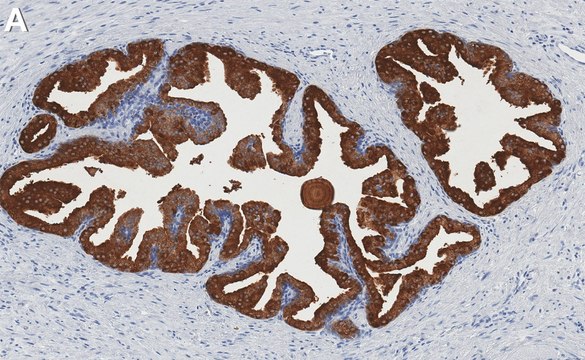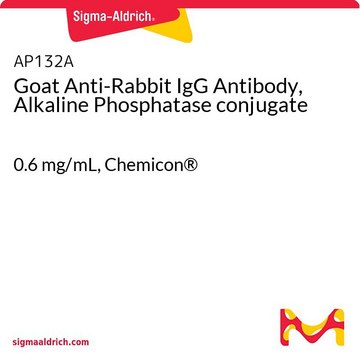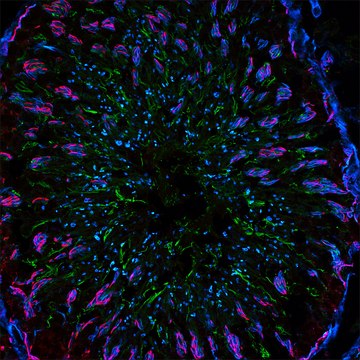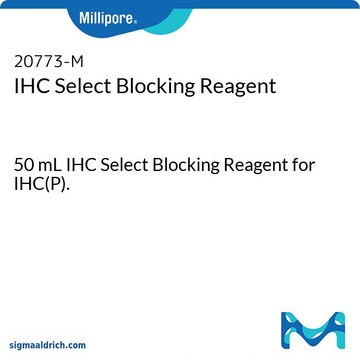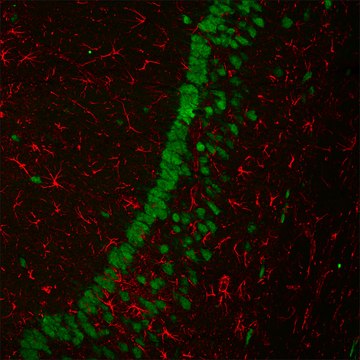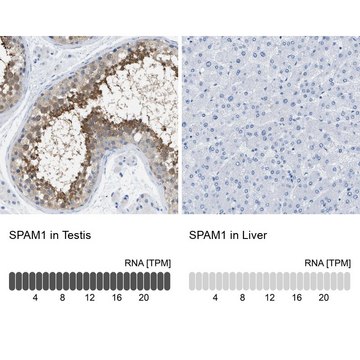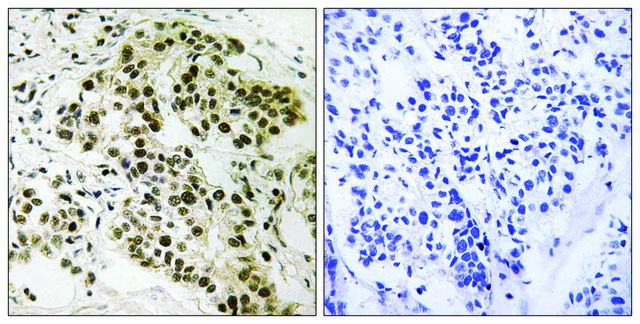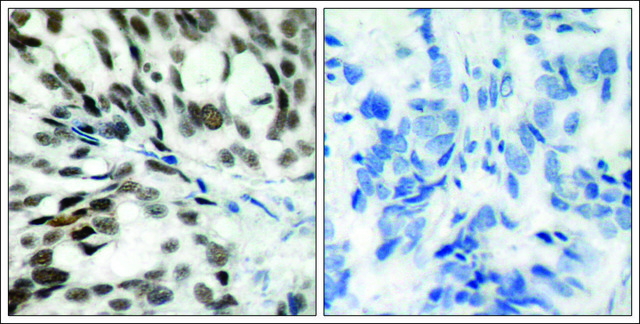General description
We are committed to bringing you greener alternative products, which adhere to one or more of The 12 Principles of Green Chemistry. This antibody is Preservative-free, produced without the harm or sacrifice of animals and exceptionally stable to allow for ambient shipping and storage if needed and thus aligns with "Waste Prevention", "Designing Safer Chemicals" and "Design for Energy Efficiency".
Click here for more information.
ZooMAb® antibodies represent an entirely new generation of recombinant monoclonal antibodies. Each ZooMAb® antibody is manufactured using our proprietary recombinant expression system, purified to homogeneity, and precisely dispensed to produce robust and highly reproducible lot-to-lot consistency. Only top-performing clones are released for use by researchers. Each antibody is validated for high specificity and affinity across multiple applications, including its most commonly used application. ZooMAb® antibodies are reliably available and ready to ship when you need them.
Specificity
Clone 1N6 is a ZooMAb® rabbit recombinant monoclonal antibody that specifically detects PHD finger protein 20 (PHF20). It targets an epitope within 25 amino acids from the C-terminal half.
Immunogen
KLH-conjugated linear peptide corresponding to 25 amino acids from the C-terminal half of human PHD finger protein 20 (PHF20).
Application
Quality Control Testing
Evaluated by Western Blotting in HCT116 cell lysate.
Western Blotting Analysis: A 1:10,000 dilution of this antibody detected PHF20 in HCT116 cell lysate.
Tested Applications
Western Blotting Analysis: A 1:1,000 dilution from a representative lot detected PHF20 in Ntera-2 and L6 cell lysates.
Affinity Binding Assay: A representative lot of this antibody bound PHF20 peptide with a KD of 2.5 x 10-7 in an affinity binding assay.
Immunohistochemistry (Paraffin) Analysis: A 1:100 dilution from a representative lot detected PHF20 in human cerebral cortex tissue sections.
Immunocytochemistry Analysis: A 1:100 dilution from a representative lot detected PHF20 in HCT116 cells.
Note: Actual optimal working dilutions must be determined by end user as specimens, and experimental conditions may vary with the end user.
Target description
PHD finger protein 20 (UniProt: Q9BVI0; also known as Glioma-expressed antigen 2, Hepatocellular carcinoma-associated antigen 58, Novel zinc finger protein, Transcription factor TZP) is encoded by the PHF20 (also known as C20orf104, GLEA2, HCA58, NZF, TZP) gene (Gene ID: 51230) in human. PHF20 is a multi-domain, disulfide-linked homodimeric protein that is a component of the MLL1/MLL complex. It is expressed in heart, kidney, liver, lung, pancreas, placenta, spleen, and testis. However, its expression is not observed in brain, skeletal muscle, colon, ovary, prostate, small intestine, and thymus. It is expressed in colon and ovary cancer cell lines, but not in normal tissues. It contains two conserved Tudor domains (aa 4-69 and 83-147). Tudor domain 2 mediates reading of dimethyl-lysine residues but Tudor domain 1 does not bind dimethyl-lysine, due to an atypical and occluded aromatic cage. Tudor domain is reported to recognize p53 dimethylated at lysine 370 and 382. A homodimeric form of Tudor domain can associate with two dimethylated sites on p53 with enhanced affinity. Association of p53 with PHF20 promotes its stabilization by reducing Mdm2-mediated p53 ubiquitination and degradation. PHF20 also up-regulates p53 in response to DNA damage. PHF20 deficiency is reported to cause impaired autophagic flux and autophagy gene expression under glucose starvation. PHF20 regulates autophagy genes through enhancer activation via H3K36me2 recognition as an epigenetic reader. PHF20 mice exhibit high rate of perinatal lethality, with the surviving adults having a smaller body size than the wild-type. Antibodies against PHF20 have been detected in sera from patients with hepatocellular carcinoma, glioblastoma, and childhood medulloblastoma. Two isoforms of PHF20 have been described that are produced by alternative splicing. This ZooMAb® recombinant monoclonal antibody, generated by our propriety technology, offers significantly enhanced specificity, affinity, reproducibility, and stability over conventional monoclonals. (Ref.: Park, SW., et al. (2022). Nucl. Acid Res. 50(14), 7856-7872; Cui, G., et al. (2012). Nat. Struct. Mol. Biol. 19(9); 916-924).
Physical form
Purified recombinant rabbit monoclonal antibody IgG, lyophilized in PBS, 5% Trehalose, normal appearance a coarse or translucent resin. The PBS/trehalose components in the ZooMAb formulation can have the appearance of a semi-solid (bead like gel) after lyophilization. This is a normal phenomenon. Please follow the recommended reconstitution procedure in the data sheet to dissolve the semi-solid, bead-like, gel-appearing material. The resulting antibody solution is completely stable and functional as proven by full functional testing. Contains no biocide or preservatives, such as azide, or any animal by-products. Larger pack sizes provided as multiples of 25 µL.
Reconstitution
300 µg/mL after reconstitution at 25 µL per vial. Please refer to guidance on suggested starting dilutions and/or titers per application and sample type.
Storage and Stability
Recommend storage of lyophilized product at 2-8°C; Before reconstitution, micro-centrifuge vials briefly to spin down material to bottom of the vial; Reconstitute each vial by adding 25 µL of filtered lab grade water or PBS; Reconstituted antibodies can be stored at 2-8°C, or -20°C for long term storage. Avoid repeated freeze-thaws.
Other Notes
Concentration: Please refer to the Certificate of Analysis for the lot-specific concentration.
Legal Information
ZooMAb is a registered trademark of Merck KGaA, Darmstadt, Germany
Disclaimer
Unless otherwise stated in our catalog or other company documentation accompanying the product(s), our products are intended for research use only and are not to be used for any other purpose, which includes but is not limited to, unauthorized commercial uses, in vitro diagnostic uses, ex vivo or in vivo therapeutic uses or any type of consumption or application to humans or animals.

